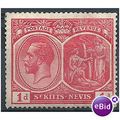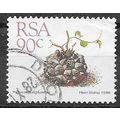Epsom, Surrey - St. Margaret's Parish Church - Hartmann postcard, local pmk 1906
- Condition : Used
- Dispatch : 2 Days
- Brand : None
- ID# : 184797461
- Quantity : 1 item
- Views : 159
- Location : United Kingdom

- Seller : justthebook (+1704)
- Barcode : None
- Start : Sat 07 Sep 2019 09:53:33 (EDT)
- Close : Run Until Sold
- Remain : Run Until Sold
Checks/Cheques
 for 1 item(s) edit
for 1 item(s) edit
Shipping Calculator
More Listings from This Seller view all
Seller's Description
- Postcard
- Picture / Image: St. Martin's arish Church, Epsom [Surrey]
- Publisher: Hartmann
- Postally used: yes
- Stamp: Edward VII half d light green
- Postmark(s): Epsom Apr 27 1906 cds
- Sent to: Miss G. Shaw, Fermoyd, Highgate, London N.
- Notes / condition:
Please ask if you need any other information and I will do the best I can to answer.
Image may be low res for illustrative purposes - if you need a higher definition image then please contact me and I may be able to send one. No cards have been trimmed (unless stated).
------------------------------------------------
Postage & Packing:
Postage and packing charge should be showing for your location (contact if not sure).
No additional charges for more than one postcard. You can buy as many postcards from me as you like and you will just pay the fee above once. Please wait for combined invoice. (If buying postcards with other things such as books, please contact or wait for invoice before paying).
Payment Methods:
UK - PayPal, Cheque (from UK bank) or postal order
Outside UK: PayPal ONLY (unless otherwise stated) please. NO non-UK currency checks or money orders (sorry).
NOTE: All postcards are sent in brand new stiffened envelopes which I have bought for the task. These are specially made to protect postcards and you may be able to re-use them. In addition there are other costs to sending so the above charge is not just for the stamp!
I will give a full refund if you are not fully satisfied with the postcard.
----------------------------------------------
Text from the free encyclopedia WIKIPEDIA may appear below to give a little background information (internal links may not work) :
*************
Epsom (/ˈɛpsəm/) is a market town in Surrey, England, 13.7 miles (22.0 km) south-west of London, between Ashteadand Ewell. The town straddles chalk downland (Epsom Downs) and the upper Thanet Formation. Epsom Downs Racecourse holds The Derby, now a generic name for sports competitions in English-speaking countries. The town also gives its name to Epsom salts, originally extracted from mineral waters there.
Epsom lies within the Copthorne Hundred used for periodic, strategic meetings of the wealthy and powerful in Anglo-Saxon England, and later having a Hundred Court. The name of Epsom is early recorded as forms of Ebba's ham(home or perhaps manor).[2] Ebba was a Saxon landowner. Many Spring line settlements by springs in Anglo-Saxon England were founded at the foot of dry valleys such as here and Effingham, Bookham, Cheam, Sutton, Carshalton, Croydon and Bromley. A relic from this period is a 7th-century brooch found in Epsom and now in the British Museum.
Chertsey Abbey, whose ownership of the main manor of Ebbisham was confirmed by King Æthelstan in 933, asserted during its Middle Ages existence that Frithwald and Bishop Erkenwald granted it 20 mansas of land in Epsom in 727.[2]Epsom appears in Domesday Book of 1086 as Evesham, held by Chertsey Abbey. Its domesday assets were: 11 hides; 2 churches, 2 mills worth 10 shillings, 18 ploughs, 24 acres (9.7 ha) of meadow, woodland worth 20 hogs; altogether it rendered £17 per year to its overlords.[3] The town at the time of Domesday Book had 38 households (and 6 serfs noteworthy enough to be recorded as assets), some of them in a nucleated village near the parish church of which there were two.[4] At various dates in the Middle Ages, manors were founded by subinfeudation at Epsom Court, Horton, Woodcote, Brettgrave and Langley Vale.[2]
Under Henry VIII and Queen Mary the manor passed to the Carew then related Darcy families. It passed via the Mynne, Buckle and Parkhurst families to Sir Charles Kemys Tynte and after his death to Sir Joseph Mawbey.
By the end of the Georgian period, Epsom was known as a spa town. Remnants of this are its water pump and multiple exhibits in the town's museum. There were entertainments at the Assembly Rooms (built c. 1690 and now a pub). A green-bufferedhousing estate has now been built upon the wells in the south-west of the town.
Epsom salts are named after the town. Epsom salt (magnesium sulphate) was originally prepared by boiling down mineral waters which sprung at Epsom. The town's market is built on the pond that existed in the Middle Ages.
Listing Information
| Listing Type | Gallery Listing |
| Listing ID# | 184797461 |
| Start Time | Sat 07 Sep 2019 09:53:33 (EDT) |
| Close Time | Run Until Sold |
| Starting Bid | Fixed Price (no bidding) |
| Item Condition | Used |
| Bids | 0 |
| Views | 159 |
| Dispatch Time | 2 Days |
| Quantity | 1 |
| Location | United Kingdom |
| Auto Extend | No |
















